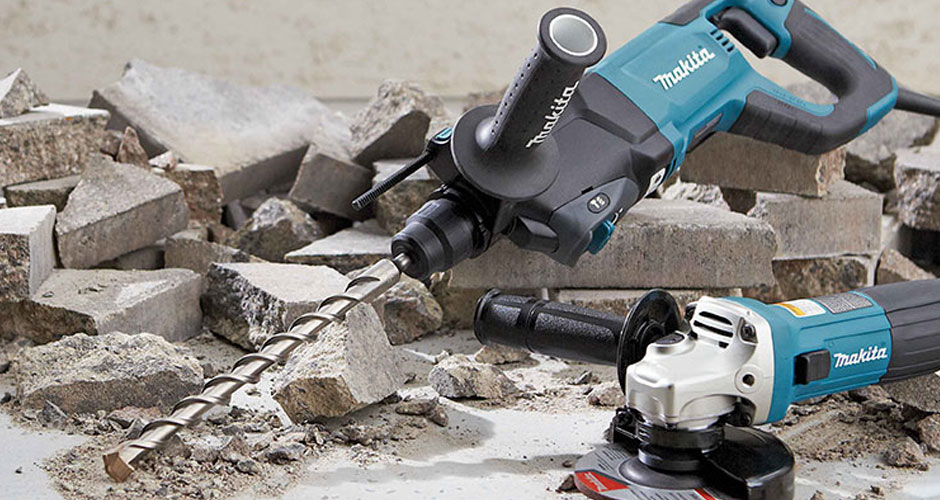If you are someone who is into DIY projects, then there is a good chance that you will need to know how to drill into concrete or masonry at one point. Whether you are mounting outdoor lighting onto stone, installing a window box on stucco or brick veneer, or mounting shelves on a cinder block […]
If you are someone who is into DIY projects, then there is a good chance that you will need to know how to drill into concrete or masonry at one point. Whether you are mounting outdoor lighting onto stone, installing a window box on stucco or brick veneer, or mounting shelves on a cinder block garage wall, you’re going to want to be able to successfully drill into concrete.
Luckily for you, we are here to help you with just that. So if you would like to learn more then keep on reading and we will take you through everything that you will want to know!
Best Drills for Concrete
There are two different kinds of drills that you can use for concrete today. This is going to be the rotary hammer or a hammer drill. They are basically the same thing but have distinct differences. Let’s go over each of them below.
Hammer Drill
You probably have seen that you can purchase a cordless drill or drill kit where the included drill already has a hammer drill function. If you are going to buy a cordless drill, you should get one with a hammer drill function. Even if you do not need it at this moment, you will likely need it at some point in the future.
The way that a hammer works is by combining the twisting action of a standard drill with vibration. The part of the drill that actually vibrates is called a gubbins. A gubbins can be compared to two coins rubbing together at a high speed.
This is going to make enough vibration for the steel bit to pulverize the hard metal in front of it. And the flutes will be able to evacuate most of it.
You should be aware that these drills can be very loud.
A hammer drill is mainly used for small holes and occasional drilling. These tools are usually used for screws and plastic anchors.
Rotary Hammer
A rotary hammer is very similar to a hammer drill. It’s like a bigger and more powerful version.
A rotary hammer works like a jackhammer that twists. The bit moves forward and back in a linear manner. It also drills bigger holes, is easier to operate, and is a lot less noisy.
With that said, this tool is also more expensive. The bits also cost more. There are some smaller cordless tools that are cheaper and work on a battery platform that you might have already.
Preparation
With a pencil, mark the desired position of the holes on the concrete surface. You should also think about the drilling depth that is needed for each hole.
If the drill comes with a stop bar, set it to the proper depth.
Put your goggles on and insert the appropriate drill bit into the drill. Then, get into position to drill. Plant your feet on the ground and hold the tool securely with both of your hands.
Grip it in one hand like a gun. It is very important that you control the drill so that it does not run away after you begin work.
Make a Guide Hole
Turn your drill on at a slower speed for better control when you make your guide hole. The hole only needs to be 1/8 to 1/4 inch deep.
After you start with a guide hole, the drill will be easier to hold. However, you still need to be very careful. Turn the speed up as you get a good handle on the drill. Drill into the concrete until the hole is complete.
Obstructions
If you hit an obstruction, you should stop immediately. Don’t force the drill farther into the concrete. This can break the drill or cause you to lose control of the tool and ruin the hole.
If you reach a spot that you can’t drill through then you should grab a masonry hammer and nail. Give the nail a few taps with the hammer to break up the obstruction.
Dust
Every so often, you should pull out the drill so that you can brush the concrete dust off. You can make a two-inch hole in less than one minute when you use a hammer drill.
Taking this into consideration, it is a good idea to pause every fifteen to twenty seconds.
After you have drilled to the hole as deep as you want, blow all of the concrete dust out of the hole. You can use a can of compressed air for this. Then you can vacuum up whatever has fallen onto the ground.
You should still be wearing your goggles from start to finish. This is going to protect you from any concrete dust as well as shards that may fly in your face or hurt your eyes.
If you are planning on doing industrial concrete drilling, then you should make sure to look into more info.
The Importance of Knowing How to Drill Into Concrete
Hopefully, after reading the above article, you now have a better idea of how to drill into concrete. As we can see, you need to be very careful when you drill into concrete. But by following the above steps, you should be able to successfully complete more DIY projects and drill into concrete and stone.
Are you looking for other interesting and useful articles like this one? If you are then you should check out the rest of our blog today for more!






